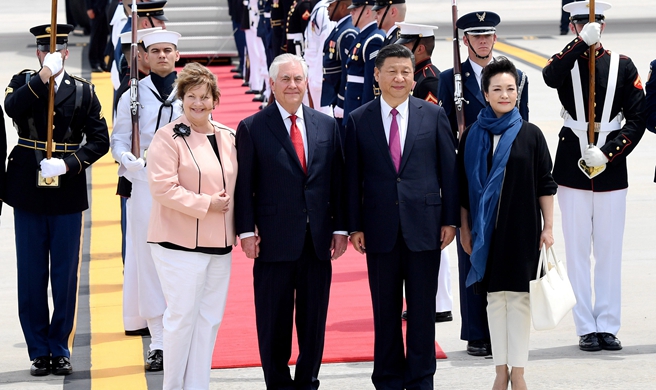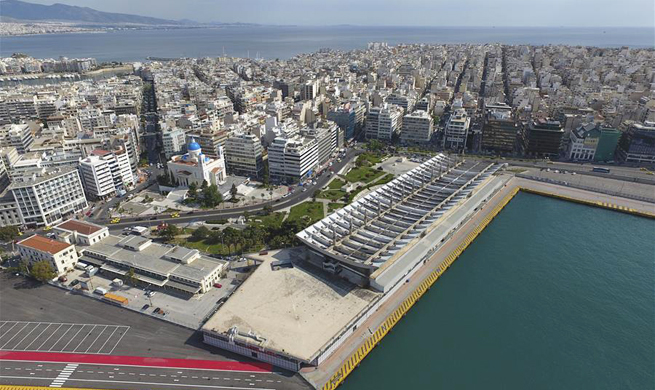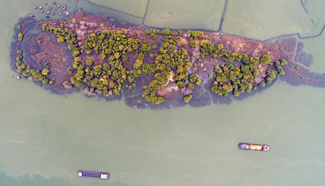by Raimundo Urrechaga
HAVANA, April 6 (Xinhua) -- Cuba has embarked on an aggressive campaign to attract foreign investment in offshore and deep-sea oil exploration in its Gulf of Mexico waters.
The timing could be better, given that the low price of oil isn't much of an incentive these days to invest in oil exploration, but the outlook has improved.
FOCUS ON OIL FOR DAILY USE
In late 2014, global oil prices saw sharpest drop in a decade -- as a result of a U.S. strategy to flood the market with shale oil to deal a blow to producing nations and to benefit its own economy -- causing the industry to struggle.
Almost three years later, the situation has stabilized somewhat, thanks to an agreement in December by the Organization of Petroleum Exporting Countries (OPEC) to cut back on oil output to shore up prices, which are currently at around 50 U.S. dollars per barrel.
That development -- along with technical and technological help from China -- has given hope to Cuban organizers of the VI Oil and Gas Congress scheduled for Friday in Havana.
"The Cuban strategy is to focus more on the area that produces oil for our everyday use, which is less risky and open to foreign investment in those regions that require more extensive and expensive studies," Oswaldo Lopez, director of exploration at Cuba's state oil company Cupet, told Xinhua.
SOLICITING FOREIGN INVESTMENT
Lopez said it is "urgent" for the island to carry out a new "oil campaign" in deep waters, where exists promising evidence of large oil reserves, specifically in the 59 blocks of Cuba's Exclusive Economic Zone (EEZ) in the Gulf of Mexico.
"We are estimating from the data we have today that there might be about 15 billion barrels of oil in that area that can be extracted," Lopez said.
To sustain and make those future investments more viable, Cuba is carrying out research in oil exploration on a scale that is unprecedented in its history.
Using new, high-definition technologies and software, more than 25,000 km of 2D seismic studies will be mapped out around the island by leading Chinese geophysicial service company BGP Inc., part of China National Petroleum Corporation (CNPC).
"The survey is being done with a 12-kilometer-long cable that will allow us to know more geological data at greater depths, and finally obtain important information about the enormous oil potential in the Gulf area we have already identified," Lopez said.
The study will be finished later this year and ready to hit the market by mid-2018.
In 2012, four exploratory wells were drilled in Cuban waters, and Mexican oil finds were obtained at a certain depth. However, in Cuban waters, the studies and drilling revealed "discrete oil findings" at that depth, indicating exploration should be done deeper, according to Lopez.
"That means the next exploration and drilling campaigns must be carried out in deeper wells that allow us to reach those levels where we know oil and other minerals are being generated," he said.
DEEPER-WATER EXPLORATION IN FUTURE
More than 80 percent of Cuba's international waters are considered deep and ultra-deep, which means most oil wells will have to be drilled at more than 3,000 meters below the sea.
"That is very expensive and it can cost around 200 to 250 million U.S. dollars. It is an investment with a lot of risk that can only be undertaken with the help of large foreign oil companies," Lopez said.
In February, Australia-based Melbana Energy ratified its interest in exploring Block 9 along the northern coast of the island, an area Cupet calls the North Belt of Cuban Oil Exploration.
Melbana Energy plans to start drilling in the area in 2018, if the technical and financial conditions are ready.
Other major oil firms, including Venezuela's state oil giant PDVSA, Sonangol of Angola, and Sherritt of Canada, have also shown their interest.
Cuba currently produces 45,000 barrels of oil per day and more than 3 million cubic meters of gas, both almost entirely used to generate electricity.
Those resources supply approximately half of the country's energy needs, and the other half is supplied by Venezuela through a very flexible deal. However, Venezuela's economic and political crises have led Havana to turn to new partners and hasten foreign investment in the energy sector.
Official data indicates that by the end of 2016, 15 percent of the energy generated in the Caribbean nation was from natural gas and 45 percent from national oil.
But Lopez warned that the area where they obtain most of oil has been exploited for a long time and production has declined over the last two years.
Since 1999, Cupet, in conjunction with foreign companies, has tried four times to strike oil in Cuban waters, but has not succeeded yet. A fifth attempt at deep-sea oil exploration is about to start with an unknown foreign partner.

















